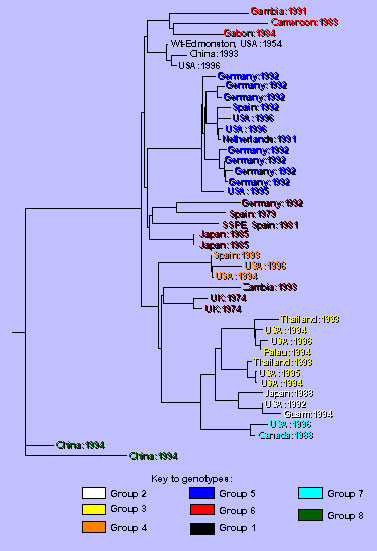Volume 4, Number 1—March 1998
Synopsis
Genetic Diversity of Wild-Type Measles Viruses: Implications for Global Measles Elimination Programs
Figure 2

Figure 2. Phylogenetic tree showing genetic relationships between the eight genetic groups of measles virus associated with U.S. outbreaks and cases since 1988. The location and year of isolation is given for each virus. Viruses not assigned to one of the eight groups are labeled in brown. The unrooted tree is based on the sequence of the protein coding region of the H gene (1854 nt). Wt-Edmonston = low passage seed of the original Edmonston isolate. SSPE = sequences obtained from cases of subacute sclerosing panencephalitis.
Page created: December 13, 2010
Page updated: December 13, 2010
Page reviewed: December 13, 2010
The conclusions, findings, and opinions expressed by authors contributing to this journal do not necessarily reflect the official position of the U.S. Department of Health and Human Services, the Public Health Service, the Centers for Disease Control and Prevention, or the authors' affiliated institutions. Use of trade names is for identification only and does not imply endorsement by any of the groups named above.